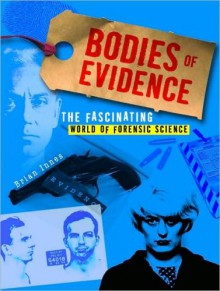Even as far back as the 13th century the Chinese appreciated that, at a crime scene, "the difference of a hair" could change whether or not a crime was solved. Since then, criminal investigators have learned how to interpret vital testimony that is written in the language of fingerprints and...
show more
Even as far back as the 13th century the Chinese appreciated that, at a crime scene, "the difference of a hair" could change whether or not a crime was solved. Since then, criminal investigators have learned how to interpret vital testimony that is written in the language of fingerprints and flakes of skin, fragments of teeth and bone, splashes of blood, flecks of paint and traces of chemicals, a splinter of glass, or a uniquely striated bullet.
Time and again, this formidable science has helped bring to justice some of the most notorious, devious, and dangerous criminals in history. Bodies of Evidence is packed with intriguing case histories involving an astonishing variety of forensic evidence, and includes accounts of political assassins and con men, sophisticated hoaxers and kidnappers; sexual serial killers and scheming poisoners; murderous husbands, wives, and lovers; terrorists and anarchists whose enemies are large corporations or the state itself; and, even, the occasional cannibal. Bodies of Evidence also chronicles and evaluates the role of those who have made the most significant contributions in the varied fields of toxicology, serology, fingerprinting, facial reconstruction, forensic ballistics, psychological profiling, and DNA fingerprinting.
Comprehensive in its sweep, Bodies of Evidence is authoritative and informative, as accessible as it is enthralling, and will justly find a place on the bookshelf of anyone who has an interest in the science of criminal investigation. The text is illustrated throughout with 200 color and black-and white photographs, some of which have rarely been seen before
show less

